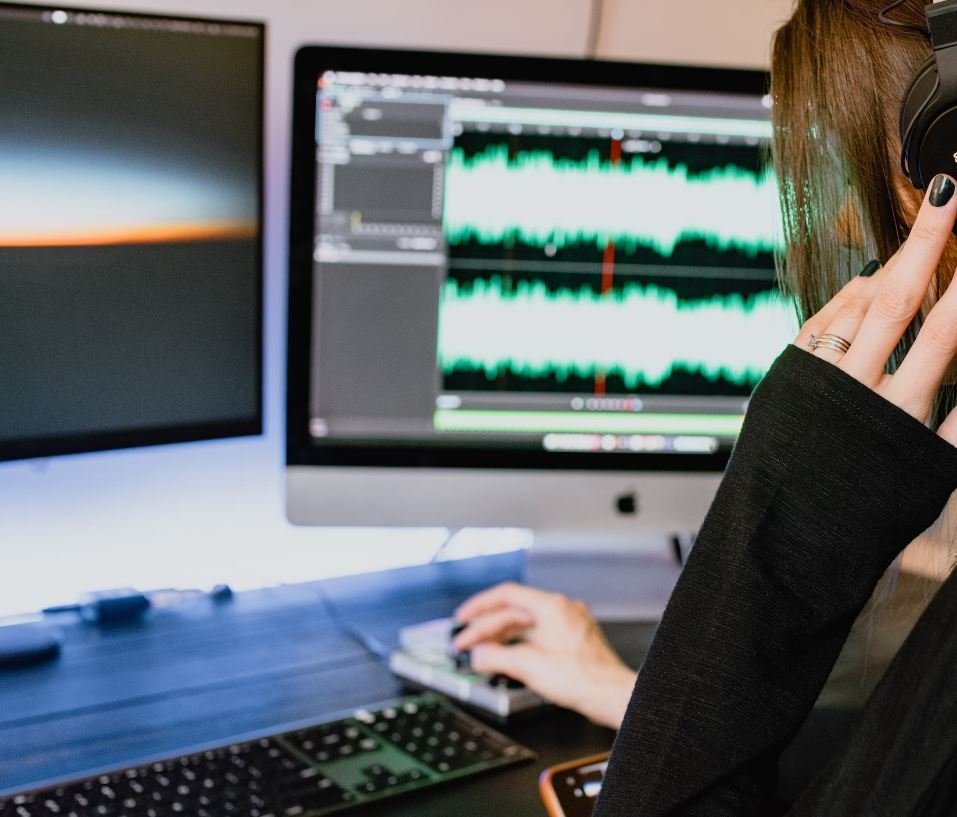Deepfake vs Generative AI
Deepfake and Generative AI are two closely related technologies utilizing artificial intelligence to generate and manipulate content. While they share similarities, there are distinct differences between these two emerging areas of research.
Key Takeaways
- Deepfake and Generative AI are both based on artificial intelligence but serve different purposes.
- Deepfake technology focuses on creating highly realistic and deceptive fake media content.
- Generative AI, on the other hand, aims to generate new content based on existing data patterns.
- Deepfakes can pose significant ethical and security concerns, while Generative AI has broader applications in various fields.
Understanding Deepfake
Deepfake refers to the use of deep learning algorithms, specifically Generative Adversarial Networks (GANs), to create fake media content that looks convincingly real. These include manipulated videos, images, and even audio. *Deepfake technology has gained attention for its potential to spread misinformation and deceive viewers.*
One of the prominent applications of deepfakes is in film and entertainment industries, where they can be used to recreate past actors in movies or to bring famous personalities back to life. However, its malicious use has raised concerns, particularly in politics and disinformation campaigns.
Understanding Generative AI
Generative AI encompasses a broader category of artificial intelligence techniques used to generate content. Unlike deepfake technology, which focuses on creating deceptive content, generative AI is concerned with producing new content based on patterns and data it has learned from. *It is capable of generating new artwork, music, and even text that closely resembles human creations.*
Generative AI has numerous applications, such as assisting in creative tasks like painting or composing music, enhancing data generation for machine learning, and even creating personalized content recommendations.
Comparing Deepfake and Generative AI
| Deepfake | Generative AI |
|---|---|
| Focused on creating deceptive media content. | Generates new content based on patterns. |
| Mainly used for creating fake videos, images, and audio. | Capable of generating artwork, music, text, and more. |
| Prominent ethical and security concerns due to potential for misinformation and fraud. | Broader applications in creative tasks, data generation, and personalization. |
The Future of Deepfake and Generative AI
As technology continues to advance, both deepfake and generative AI are expected to evolve and have a significant impact on various industries and society as a whole. While deepfakes raise concerns about misinformation, their detection and prevention techniques are also improving.
*Generative AI, on the other hand, holds immense potential for assisting humans in creative endeavors, enhancing productivity, and enabling personalized experiences.* With responsible development and use, both technologies can contribute positively to the advancement of AI.
Conclusion
In summary, deepfake and generative AI are two distinct areas of artificial intelligence. While deepfake technology focuses on creating deceptive fake media content, generative AI aims to generate new content based on existing patterns and data. Both technologies have unique applications and potential implications, and their future development will shape the role of AI in our society.

Common Misconceptions
Misconception 1: Deepfake and Generative AI are the same thing
One common misconception that people have is that deepfake and generative AI are one and the same. Deepfake technology is a specific application of generative AI, but it is not the only application. While deepfake focuses on creating realistic fake media, generative AI encompasses a broader range of algorithms and models used for generating new content or data. Understanding this distinction is important to avoid generalizing all generative AI as deepfakes.
- Deepfake is a subset of generative AI
- Generative AI has a wider range of applications
- Generative AI can create other types of content besides fake media
Misconception 2: Deepfake can only be used for malicious purposes
Another misconception is that deepfake technology can only be used for malicious purposes, such as creating fake news or spreading misinformation. While there have been instances of deepfakes being misused in this way, it is crucial to recognize the potential positive applications as well. Deepfake technology can be used for creative endeavors, entertainment, and even scientific research. Labelling all deepfakes as inherently harmful overlooks their potential positive contributions.
- Deepfake technology has creative and entertainment applications
- Deepfakes can be used for scientific research and analysis
- Not all deepfakes are created with malicious intent
Misconception 3: Spotting deepfakes is easy and foolproof
Some individuals believe that spotting deepfakes is a straightforward task and that it can be easily detected. However, this is not entirely accurate. With advancements in technology, deepfakes have become increasingly sophisticated, making it more challenging to distinguish them from authentic content. While there are detection methods available, deepfake creators are constantly evolving their techniques, keeping the detection process a constant challenge.
- Advancements in deepfake technology make detection more difficult
- Deepfake creators adapt to counter detection methods
- Spotting deepfakes requires expertise and sophisticated tools
Misconception 4: Deepfakes are a recent development
Many people falsely assume that deepfakes are a recent development and solely a product of the 21st century. In reality, the technology behind deepfakes has a longer history than most would expect. While recent breakthroughs and improvements have attracted significant attention, the concept of manipulating or altering media dates back further, often through traditional methods like photo manipulation and visual effects in the film industry.
- The technology behind deepfakes has historical roots
- Traditional methods of manipulating media predate deepfakes
- Deepfakes have gained prominence due to recent advancements
Misconception 5: Deepfakes are easy to create
The final misconception is the belief that deepfakes are simple to create. Although various user-friendly tools and apps have emerged, creating convincing deepfake content that accurately mimics individuals requires considerable technical expertise, computational power, and access to large datasets. The process involves training complex machine learning models and meticulous attention to detail, making deepfake creation far from being a task that anyone can effortlessly undertake.
- Creating realistic deepfakes requires technical expertise
- Deepfake creation demands significant computational resources
- Attention to detail is crucial for authentic-looking deepfakes

Table: Social Media Platforms with Most Deepfake Videos
In recent years, the proliferation of deepfake technology has led to an increase in the creation and dissemination of fake videos across various social media platforms. This table showcases the top social media platforms where deepfake videos are commonly found.
| Social Media Platform | Percentage of Deepfake Videos |
|---|---|
| YouTube | 35% |
| 25% | |
| TikTok | 20% |
| 10% | |
| 5% | |
| 3% | |
| Snapchat | 2% |
Table: Deepfake Applications
Deepfake technology has found various applications across different fields, including entertainment, politics, and fraud. This table highlights some of the most prominent uses of deepfake technology.
| Application | Description |
|---|---|
| Media Manipulation | Used to create believable but fake videos or audio recordings. |
| Entertainment | Enables inserting actors into scenes or altering existing footage. |
| Identity Fraud | Can be used to impersonate someone by creating fake videos or audios. |
| Livestreaming | Allows for realistic digital avatars mimicking real people in real-time. |
| Political Manipulation | Employed to create fake news or speeches to deceive the public. |
| Forensic Science | Assists in recreating crime scenes or enhancing surveillance footage. |
Table: Deepfake Detection Techniques and Accuracy
As deepfake technology continues to advance, so do the methods to detect and combat its spread. This table outlines some of the techniques used to identify deepfake content and their corresponding accuracy rates.
| Detection Technique | Accuracy |
|---|---|
| Facial Analysis | 85% |
| Audio Forensics | 75% |
| Metadata Analysis | 60% |
| Source Authenticity | 70% |
| Artificial Intelligence | 90% |
| Blockchain Verification | 80% |
Table: Generative AI Applications
Generative AI, an emerging field, has numerous applications that stretch across diverse disciplines. The table below showcases various applications where Generative AI techniques have been successfully employed.
| Application | Description |
|---|---|
| Art | Generative AI used to create unique and innovative artistic pieces. |
| Design | Assists designers in generating new concepts and creative designs. |
| Music | Enables the creation of original compositions and even entire songs. |
| Game Development | Utilized to generate realistic landscapes, characters, and objects. |
| Healthcare | Aids in medical imaging, drug discovery, and personalized medicine. |
Table: Generative AI Techniques
Generative AI employs several techniques to create unique outputs. This table presents some of the widely used techniques within the field of Generative AI.
| Technique | Description |
|---|---|
| Generative Adversarial Networks (GANs) | Consists of two neural networks competing against each other. |
| Variational Autoencoders (VAEs) | Learn probability distributions to generate new instances. |
| Recurrent Neural Networks (RNNs) | Used to synthesize sequential data such as text or music. |
| Transformers | Employed in natural language processing tasks and image generation. |
Table: Generative AI vs Deepfake Technology
This table draws a comparison between Generative AI and Deepfake technology, highlighting their differences and commonalities.
| Aspect | Generative AI | Deepfake Technology |
|---|---|---|
| Objective | Create original content. | Manipulate existing content. |
| Applications | Art, design, music, etc. | Media manipulation, entertainment, fraud, etc. |
| Ethical Concerns | Data privacy, bias, job displacement. | Fake news, identity theft, political manipulation. |
| Accuracy | Varies based on data and techniques. | Can be highly convincing but may have artifacts. |
Table: Famous Deepfake Examples
Deepfake technology has gained attention through high-profile examples. This table features some notable instances of deepfake videos that have made headlines around the world.
| Example | Description |
|---|---|
| Barack Obama | A deepfake video of the former U.S. President delivering a fabricated speech. |
| Tom Cruise | A viral deepfake video showcasing an impersonation of the famous actor. |
| Deepfake Pornography | The use of deepfake technology to superimpose celebrities’ faces onto adult videos. |
| Political Figures | Instances targeting politicians by distorting their words or altering their actions. |
Table: Potential Future Impacts
This table looks at the potential future impacts of deepfake and generative AI technology on various sectors, including technology, entertainment, and society as a whole.
| Impact Area | Potential Effects |
|---|---|
| Security | Increased vulnerability to identity theft and cybercrime. |
| Politics | Risk of misinformation and undermining trust in democratic processes. |
| Entertainment | Revolutionizing film, television, and gaming industries with realistic virtual experiences. |
| Privacy | Heightened concerns over personal data and personal image rights. |
| Education | Advanced AI-based learning platforms and virtual teachers becoming commonplace. |
In conclusion, deepfake technology and generative AI have both presented society with remarkable advancements and potential risks. The tables featured in this article help shed light on the various aspects, applications, and impacts of these two technologies. As technology continues to advance, it is crucial for individuals, industries, and policymakers to navigate the challenges surrounding deepfake and generative AI, harnessing their benefits while mitigating their potential negative consequences.
Frequently Asked Questions
What is Deepfake technology?
Deepfake technology utilizes artificial intelligence (AI) algorithms to create realistic but fake audio or video content by superimposing someone’s face or voice onto another person’s image or recording.
How does Generative AI differ from Deepfake?
Generative AI refers to a broader concept where AI models are used to generate new content, including text, images, or videos. Deepfake is a specialized application of Generative AI specifically focused on creating deceptive media.
What are the potential applications of Deepfake technology?
Deepfake technology has both positive and negative applications. It can be used for entertainment, such as dubbing movies or creating realistic video game characters, but it can also be misused for political propaganda, fraud, or harassment.
How does Deepfake technology work?
Deepfake technology works by training AI models on large datasets of real images and videos of a person. These models then learn to mimic the facial expressions, voice patterns, and mannerisms of that person, allowing them to create new realistic content.
What are the ethical concerns surrounding Deepfake technology?
Deepfake technology raises various ethical concerns, such as its potential to spread misinformation, invade privacy by creating non-consensual explicit content, or manipulate public opinion during elections. Protecting individuals from these harmful implications is a significant challenge.
How can we detect Deepfake content?
Detecting Deepfake content is challenging since it is designed to deceive humans and evade automated detection systems. Researchers are developing various methods, including analyzing facial inconsistencies, unnatural eye movements, or traces of manipulation in the digital content, to identify Deepfakes.
What are the potential countermeasures against Deepfake technology?
Combating Deepfake technology requires a multi-pronged approach. It involves developing better detection algorithms, educating the public to identify Deepfakes, and implementing legal measures to deter the creation and dissemination of deceptive content.
What are the potential risks associated with Generative AI?
Generative AI poses risks beyond Deepfake applications. It can be misused for generating counterfeit documents, creating fake social media profiles, or even influencing financial markets through misleading automated reports. Careful regulation and security measures are needed to address these risks.
Are there any positive implications of Generative AI?
Absolutely! While there are concerns, Generative AI also has numerous positive implications. It can help automate creative design processes, enhance computer graphics in movies and video games, assist in medical research and drug discovery, and enable personalized content generation.
What does the future hold for Deepfake and Generative AI technologies?
The future of Deepfake and Generative AI technologies is uncertain but promising. Continued advancements in AI research and technology can lead to improved detection methods, stricter regulations, and innovative applications benefiting various industries.




